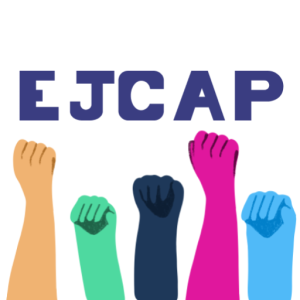By Melisa Walk of Pacoima Beautiful
What is “SB 54” ?
SB 54 is the first legislation in United States history to set specific producer reduction goals to address plastic packaging. California Senate Bill 54: “The Plastic Pollution Prevention and Packaging Producer Responsibility Act” was signed by Governor Newsom on June 30, 2022. The legislation will create a manufacturer-run Producer Responsibility Organization (PRO) where plastic producers will contribute to the California Plastic Pollution Mitigation Fund. The Department of Resources Recycling and Recovery would charge PROs with a “California circular economy administrative fee,” which would support the implementation and enforcement of the program, essentially creating a tax on plastic producers. The legislation would not allow a plastic producer to sell, offer to sell, import or distribute covered plastic materials in the state of California unless those corporations are in the PRO. While a “tax” on plastic producers sounds like a win to many conservation and wildlife organizations and activists, that is not the case for environmental justice communities. SB 54 fails to address many concerns environmental justice and social justice groups have when it comes to extraction, refinement, production, consumption and waste of plastic pollution. This article goes into some of those concerns – the continued exception for polystyrene and PFAS, the lack of clear definitions, the absence of transparent community engagement practices, and the necessity for impacted communities to have a seat at the table.
No Ban on the Sale and Manufacturing of Polystyrene
SB 54 does not ban the sale and manufacturing of polystyrene (Styrofoam) or of PFAS, commonly referred to as “forever chemicals”. Failing to outright ban these products continues to undermine the intentionality of this bill. It lacks the understanding of the effects of plastics production. Plastic pollution extends beyond the impacts on marine life; it includes the manufacturing of plastics that has been polluting communities of color and low-income communities for generations. Styrofoam releases toxic chemicals into the air, water and soil during manufacturing – long term exposure results in serious impacts like depression, headaches, hearing loss and disrupted kidney function. City and county level legislators around the country are banning Styrofoam from food service products. It is necessary for SB 54 to prioritize impacted communities and ban these harmful products.
Lack of Clear Definitions
In addition to this glaring oversight, SB 54 does not clearly define “reusable” or “refillable” and it is clear that in many cases plastic manufacturers are still allowed to produce toxic and non-reusable plastics. The advisory group appointed by CalRecycle will be the body determining the definitions for these terms. If the group does not establish strong definitions, the terms “reusable” or “refillable” can be easily twisted to provide loopholes for manufacturers to continue producing the same products as before. A clear example of this is in prop 67 – when California passed a law to ban plastic bags, manufacturers continued to produce them but with clear labeling that the bag is “reusable” or to “please recycle,” and a 10¢ charge for a bag is hardly a disincentive. Strong definitions are critical to ensure producers adhere to the requirements of the
bill.
Lack of Community Engagement
Community outreach and education are mentioned only four times in the 40-page bill. The first is requiring the PRO to include a plan for collaboration with existing popular education around recycling, composting and reuse and refill behaviors (sec. 42051.1). However, there are no specifications on what entities the PRO should or must collaborate with, and without dedicated community organizers to inform the public about the need to properly recycle, it is difficult to imagine that the state can overcome the 10% recycling rate. Within this section the bill states a goal of the PRO should be “to obtain a consistently high level of public participation,” however the bill never determines what is a “high level” of participation (sec. 42051.1 (e)). If California wants to reach its goal to have 65% of plastics recycled by 2032 then educating community members on what plastics can and can’t be recycled and how to properly dispose of them should be a top priority. Many members of low-income communities already recycle as an economic tool; recognizing that community members have practices in place could be an asset for CalRecycle. It is important that best practices and community-led solutions are prioritized through any decision making-processes.
Need for a Seat at the Table
At the heart of this environmental justice critique is our belief that it is totally unacceptable to decenter and disempower communities most harmed by plastic pollution. The implementation timeline for SB 54 states that by 2024 a published list of recyclable and compostable categories will be available for the public. Again and again, communities that are heavily impacted by plastic production and disposal are not involved in the conversations around remediation and pollution reduction. It is vital as CalRecycle develops their regulatory definitions that they engage with environmental justice communities and advocates. The department is the supervising body which oversees the program, appoints the Advisory Board, researches packaging waste types, and receives feedback on the plan and budget. CalRecycle undeniably has a huge amount of power in defining the framework of SB 54 and the department needs to invite more input from frontline communities who are harmed first and worse by plastic pollution, because these communities already have actionable steps for real sustainable solutions.
Moving Forward
While this legislation has a long way to go to address the needs of communities of color, there is hope. We need to ban the sale and manufacturing of polystyrene and PFAS. We need to define what it means to have “reusable” and “refillable” products and create community led solutions. We need to give the state regulatory bodies more authority to regulate plastic producers. We need to focus our efforts on community and ask community members for their best practices and what should be prioritized. SB 54 is not a silver bullet, and while conservation organizations are toting this legislation as a win, it leaves communities that deal with the manufacturing and incineration of plastics disappointed.


